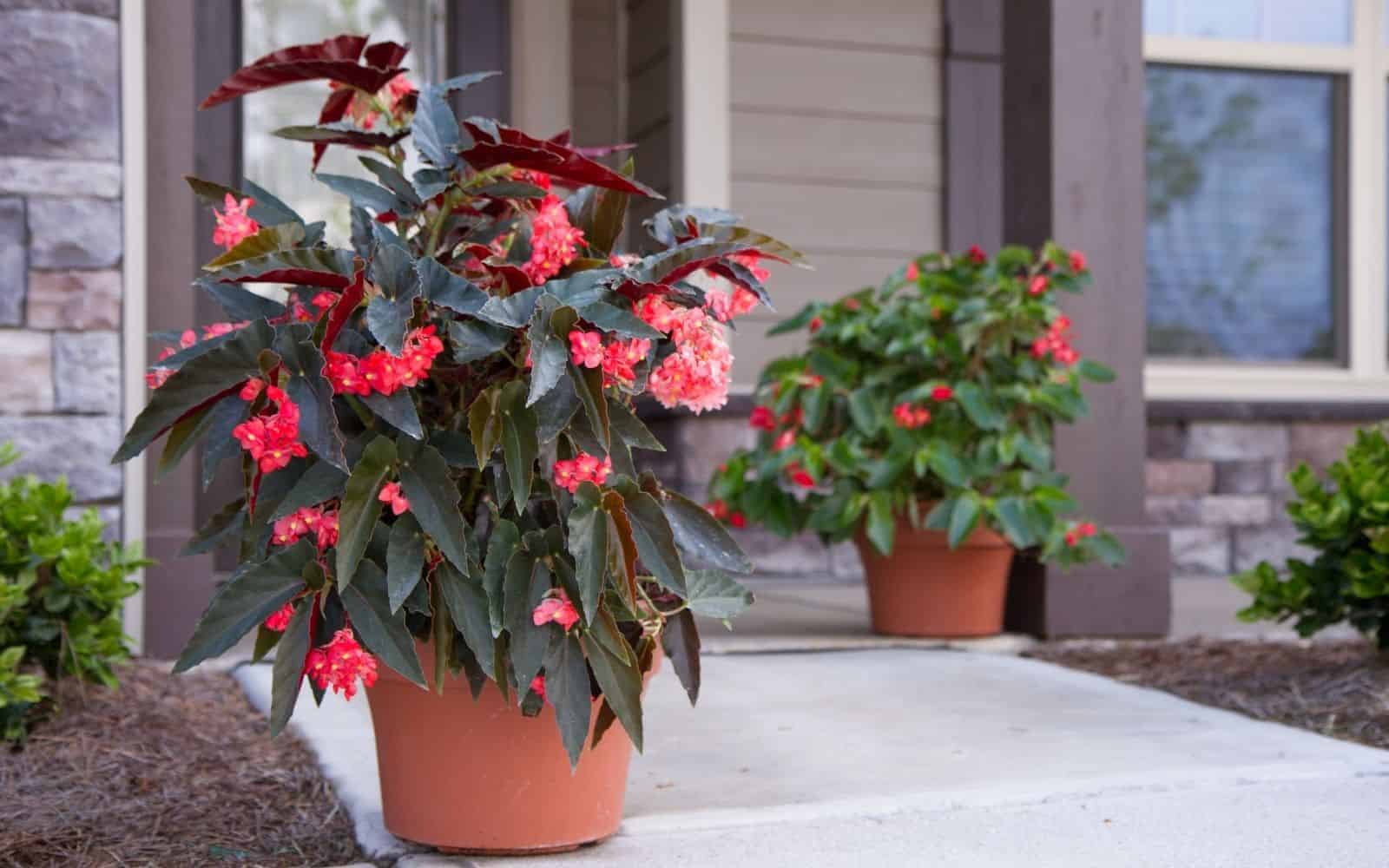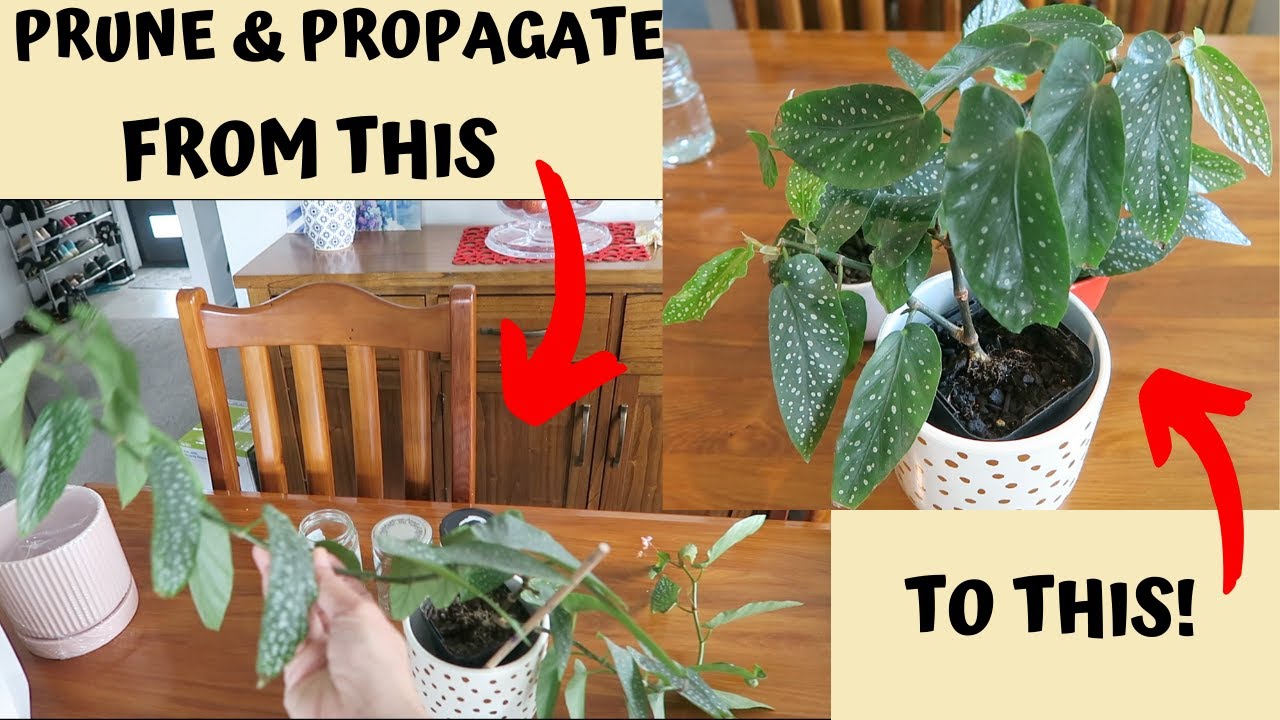To prune angel wing begonia, begin by removing any dead, damaged, or wilted leaves and stems. Angel wing begonias can benefit from regular pruning to maintain their shape and promote healthy growth.
Pruning should be done during the plant’s active growth period, typically in spring or summer. Start by inspecting the plant for any dead, damaged, or wilted leaves and stems. Using clean, sharp pruning shears, carefully remove these unwanted parts. Additionally, you can trim back overgrown or leggy stems to encourage bushier growth.
Remember to make clean cuts just above a leaf node or bud to promote new growth. Pruning can also help control the size of the plant and prevent it from becoming too large or unruly. By following these steps, you can keep your angel wing begonia looking neat and vibrant.

Credit: www.homefortheharvest.com
Understanding Angel Wing Begonias
Angel wing begonias are beautiful and popular houseplants known for their distinctive wing-shaped leaves. These plants have certain characteristics that set them apart from other begonias. Angel wing begonias come in various varieties, each with its own unique leaf color and size.
These plants thrive in specific growing conditions, making it essential to provide them with the right environment. Bright indirect light, well-draining soil, and regular watering are key factors for their successful growth. It is important to prune angel wing begonias to maintain their shape and promote new growth.
Regular pruning helps remove dead or damaged leaves, encourages branching, and keeps the plant compact. By understanding the characteristics and ideal growing conditions, you can successfully care for and maintain your angel wing begonia plants to enjoy their beauty in your home.
Importance Of Pruning Angel Wing Begonias
Pruning angel wing begonias is essential for their overall health and appearance. By regularly trimming these plants, you can promote new growth, improve air circulation, and prevent overcrowding. Pruning also helps to maintain the desired shape and size of the begonia, ensuring a more compact and attractive plant.
It’s important to know when to prune angel wing begonias, typically during their active growth period in spring or early summer. To prune effectively, you’ll need a few tools such as sharp pruning shears or scissors, gloves to protect your hands, and disinfectant to sanitize your tools between cuts.
By following these guidelines and embracing the benefits of pruning, you can keep your angel wing begonias thriving and looking their best.
How to Prune Angel Wing Begonia: Step by Step Guide
Assessing The Plant’S Growth
Assessing the plant’s growth is crucial before pruning the angel wing begonia. Identify overgrown or damaged branches that need to be removed. Look for branches that are weak, broken, or hindering the plant’s overall health. Determine the desired shape and size you want the plant to achieve.
Consider the plant’s natural growth habit and aesthetic preferences. Make strategic cuts to encourage new growth and maintain a balanced appearance. Regularly evaluate and prune the plant to promote healthy growth and prevent overcrowding. By following these guidelines, you can successfully prune the angel wing begonia and keep it looking its best.
Pruning Techniques For Angel Wing Begonias
Pruning angel wing begonias involves a few key techniques. Start by removing any dead or diseased branches. To shape overgrown branches, trim them back. To encourage bushier growth, try pinching back the stems. Regular pruning helps maintain the overall health and appearance of your angel wing begonia plants.
By removing dead or diseased branches, you prevent the spread of any potential diseases and encourage new growth. Trimming overgrown branches not only helps to shape the plant but also improves air circulation and light penetration, which leads to healthier growth.
Pinching back the stems of the begonia encourages branching and produces a fuller, more compact plant. With these pruning techniques, you can keep your angel wing begonias looking their best and ensure their long-term vitality.
Aftercare For Pruned Angel Wing Begonias
Proper watering and fertilization are crucial for the aftercare of pruned angel wing begonias. Consistent monitoring is necessary to ensure regrowth and make any necessary adjustments. To prevent pests and diseases, it is important to follow prevention tips.
Troubleshooting Pruning Issues For Angel Wing Begonias
Properly pruning angel wing begonias requires careful attention to common mistakes that can hinder their growth. Leaf yellowing or browning can be addressed by ensuring the right amount of sunlight and avoiding overwatering. To combat slow growth or lack of blooms, it is important to provide adequate fertilization and regular trimming.
Additionally, avoiding excessive pruning and ensuring the use of sharp, clean tools can help prevent any damage to the plant. By maintaining a healthy and balanced pruning routine, angel wing begonias can thrive and bring beauty to any garden or indoor space.
Frequently Asked Questions Of How To Prune Angel Wing Begonia
How Do You Prune Angel Wing Begonia?
Prune angel wing begonias by cutting back leggy stems and removing dead or diseased foliage. Use sharp scissors or pruning shears to make clean cuts just above leaf nodes. Pruning will encourage new growth and maintain the plant’s shape and health.
When Should I Prune My Angel Wing Begonia?
Prune your angel wing begonia in early spring or late winter when growth is minimal. Avoid pruning during the active growing period to prevent stress on the plant. This timing will encourage healthy growth and flowering during the growing season.
Can I Propagate Angel Wing Begonia From Pruned Cuttings?
Yes, you can propagate angel wing begonia from pruned cuttings. Take 3-6 inch stem cuttings just below a leaf node and remove the lower leaves. Dip the cut end in a rooting hormone and place it in a well-draining potting mix.
Keep the soil moist and in a warm, humid environment until roots develop.
How Often Should I Prune Angel Wing Begonia?
Prune angel wing begonias as needed to maintain their size and shape. Regular pruning every 2-3 months is recommended to remove leggy growth and encourage bushier growth. Adjust pruning frequency based on the plant’s growth habits and your desired look.
Does Pruning Help Angel Wing Begonia To Bloom More?
Yes, pruning can help angel wing begonias bloom more. Removing spent flowers and pruning back leggy stems stimulates new growth, resulting in more flower production. Prune after the blooming period to promote fresh growth and ensure a continuous blooming cycle.
Should I Prune The Roots Of My Angel Wing Begonia?
It is generally not necessary to prune the roots of angel wing begonias unless the plant is severely root-bound. However, if you notice stunted growth or poor health, it may be beneficial to check the roots and trim any damaged or excessively long roots when repotting the plant.
Conclusion
Pruning angel wing begonias is an essential task that promotes healthier growth and enhances the overall appearance of the plant. By following the proper technique and timing, you can ensure the longevity and vitality of your begonias. Regularly removing dead flowers, leaves, and stems will not only prevent the risk of disease but also allow for new growth and blooms.
Additionally, pruning helps to maintain the desired shape and size of your begonias, making them more aesthetically pleasing. Remember to use clean and sharp tools, making clean cuts just above a leaf node. Moreover, by providing adequate sunlight, water, and nutrients, you can create an optimal environment for your angel wing begonias to thrive.
Happy pruning and enjoy the beauty of your well-maintained plants!

